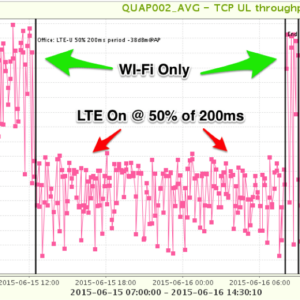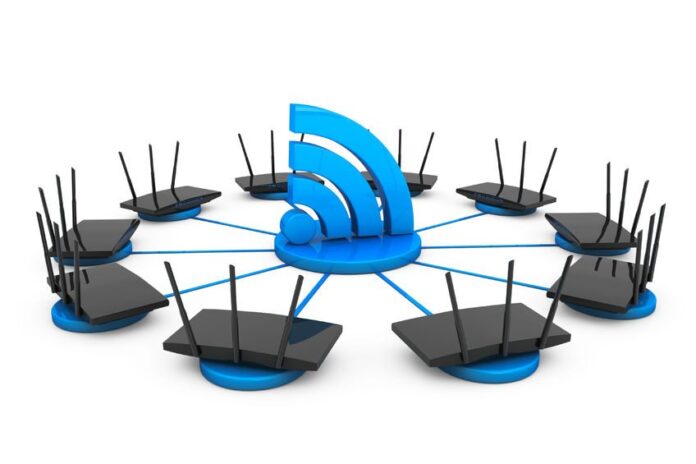Continuing RCR Wireless News’ examination of some of the publicly available testing results for the co-existence of LTE over unlicensed spectrum, we look at testing done by the LTE-U Forum and CableLabs. For more information on the LTE-U testing performed by Qualcomm, Google and Broadcom that those companies have used as the basis of arguments to the Federal Communications Commission on LTE’s coexistence with Wi-Fi, see Part 1.
LTE-U Forum: The consortium that involves Verizon Communications, Alcatel-Lucent, Samsung, Qualcomm Technologies and Ericsson has a significant amount of testing and technical documentation on its website, although opponents argue that some of the most crucial details are proprietary and therefore not disclosed. The LTE-U Forum does conclude that LTE-U requires co-existence mechanisms to be a good neighbor to Wi-Fi, but said that its testing of both low density and high density arrangements, indoors and outdoors, show that “LTE-U behaves as a comparable neighbor to Wi-Fi compared to Wi-Fi as a neighbor, while LTE-U significantly outperforms Wi-Fi.”
For instance, in a two-operator scenario that looked at two outdoor Wi-Fi deployments versus a mixed Wi-Fi/LTE-U deployment or two LTE-U deployments, the Forum’s technical report concluded that “the average gain of 96% to 180% for the median user throughput was observed when one of Wi-Fi operator deployment is replaced by LTE-U. The average gain of 6% to 21% for the median user throughput was also observed for the co-existing Wi-Fi. When the Wi-Fi deployment of both operators is replaced by LTE-U, LTE-U/LTE-U scenario significantly outperforms Wi-Fi/Wi-Fi scenario. The observed average gain for the median user throughput is 123% to 229%.” Gains in indoor environments were smaller.
In its FCC comments, Verizon said that “all LTE-U Forum simulations and testing are based on the current 802.11ac standard using a wide variety of top-selling 5 GHz Wi-Fi equipment. Second, all LTE-U coexistence simulation and test results either meet or exceed Wi-Fi’s coexistence simulation and test results.”
CableLabs: As the research and development group for the cable industry, CableLabs has been testing out the interactions of LTE over unlicensed spectrum and Wi-Fi interactions in its new testing center, complete with anechoic chamber. Some of its initial findings concluded that even with the LBT features that will be required for LAA, the difference between static and exponential back-off still leads to co-existence issues for Wi-Fi. CableLabs also took a look at duty-cycled LTE that showed some of the same issues mentioned in other testing, such as Google’s.
More recently, Joey Padden, lead architect at CableLabs, has been exploring whether a Wi-Fi radio could detect duty-cycled LTE. Padden and 7Signal used both CableLabs’ anechoic chamber, as well as the actual building Wi-Fi network to which co-workers were connected, with an LTE signal source using 5 GHz. Initial results showed that “the impact to many KPIs is obvious,” including throughput and latency, Padden said.

Padden summarized the testing and initial results in this blog post.
If you really want to go down the rabbit hole on the evaluations of LTE over unlicensed, you can check out the 3GPP RAN 1 documents related to the development of LAA. NTT DoCoMo, Samsung, Texas Instruments, and a number of others reference LTE over unlicensed testing in their documents. There are also a couple of presentations, one from Qualcomm as well as a demo of LTE-U device testing, in the archived videos from this year’s LTE Innovation Summit.
In its comments to the FCC, the Wireless Broadband Alliance cites the LAA-related simulation work as “interesting and valuable data,” but goes on to say that “it is the opinion of some members of the Wi-Fi vendor and operator community that there are important metrics not captured in these simulation results, such as jitter, frame re-transmission rate, beacon loss and deferral, and power save signaling loss and deferral” – which is to say that how well LTE over unlicensed spectrum and Wi-Fi play together in the real world will likely continue to be a point of industry contention.

